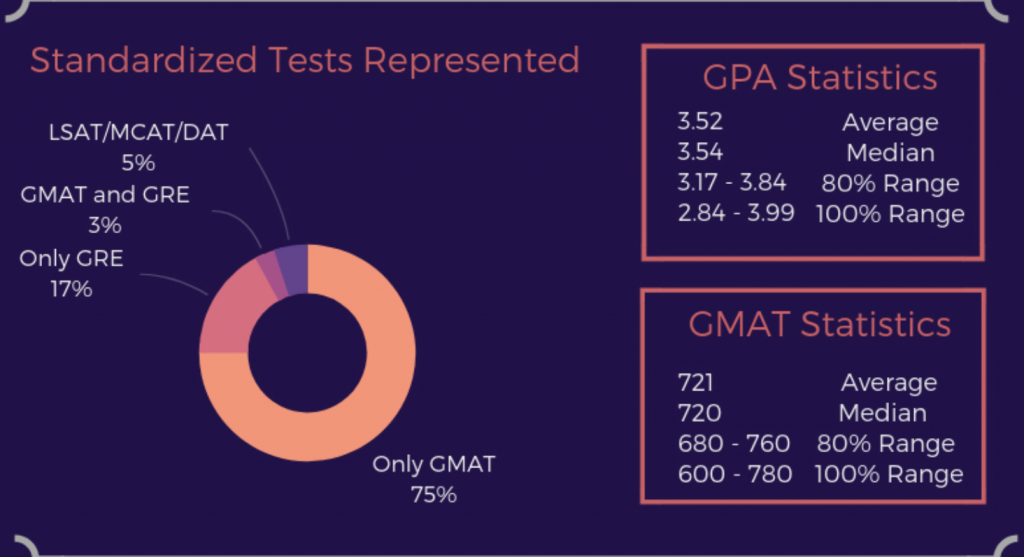Duke University’s Fuqua School of Business recently revamped its application process to revise its short answer questions. Catherine Tuttle, a former associate director at Duke University’s Fuqua School
of Business, recently discussed tips for applicants on how to best
approach Fuqua’s application.
25 RANDOM THINGS ABOUT YOU
Fuqua’s notorious 25 Random Things essay can be tricky if you aren’t
familiar with it. Yet, Tuttle says, this prompt is simply to learn more
about you beyond your professional attributes.
“This is an opportunity to have some fun and to highlight an aspect
of yourself that may not shine through in traditional MBA essay
questions,” Tuttle writes. “This is also an opportunity to connect on a
personal level – this is a medium to be courageous. If done right, your
answers will draw the committee in and lead them to advocate for you
during the process.”
To answer this question, Tuttle says, applicants should reflect on their values, hobbies, and passions.
“These can and should be a combination of poignant, playful, sad,
funny, striking, deep and everything that lies in between,” she writes.
“Some can be a paragraph whereas others may be a declarative sentence.
Remember that these things should reflect with the core values of
Fuqua’s community – collaboration, diversity, respect, honesty and
contributing to a cause greater than yourself.”
The Fuqua Community and You
The second Fuqua essay prompt asks you how you see yourself engaging in and contributing to the Fuqua community outside of the classroom.
Tuttle says the key aspect of this question is “outside of the classroom.”
“Applicants frequently ignore that portion of the prompt and wax
poetic about how their experiences will add value in classroom
discussions,” Tuttle writes. “Going deeper here is crucial. Fuqua boasts
over 60 clubs, all of which were initiated and run by students. These
clubs and other experiential opportunities position you to take action
and flex the leadership muscle you’ll be strengthening in the program.”
It’s important, Tuttle adds, to highlight which clubs you think you’d fit into and tie in your experience.
“Consider the associations you’d enjoy being a contributor to –
professional clubs but also merrier ones like the Outdoors Club or the
Wine Club,” Tuttle writes. “Then, contemplate your past experiences and
how they will reinforce Fuqua’s mission and goals. Connecting with club
members will ensure you’re even better armed to specifically articulate
how you plan to add value.”
CULTURAL COMPETENCY
Fuqua also emphasizes its diversity. Nearly 40% of its student body hails from outside the United States.
Tuttle says it’s critical that applicants demonstrate cultural competency when applying to Fuqua.
“Explore ways to emphasize your experience partnering with globally
diverse teams and why an international perspective is essential to you
from a personal and professional perspective,” Tuttle writes.
MBA vs. EMBA
You want to get a business degree, but you aren’t sure whether the Full-Time MBA or Executive MBA is right for you.
Brian O’Connell, of TheStreet, recently discussed the differences between the two degrees and how prospective applicants can decide which is right from them.
FULL-TIME MBA
For O’Connell, the Full-Time MBA is a flexible degree that can be applied to a variety of industries.
“While an MBA’s core disciplines are in the business arena, an MBA
can also prove useful in a number of other professional categories,
including law, public policy, urban planning, marketing, sales and a
myriad of careers,” O’Connell writes.
Yet, as flexible as the degree is, it comes with a few pre-requisites.
“The MBA student needs to pass and complete a core academic series of
subjects, including finance and economics, accounting, operations and
logistics, and marketing classes,” O’Connell writes. “More recently,
many colleges and universities require a technology element as well,
such as financial/technology (fin-tech), logistics, data analysis and
statistics, and technology product development.”
The GMAT is, traditionally, the standardized exam you’ll need to take
to get into an MBA program. However, more schools are now accepting the
GRE as well.
“The GMAT is considered tougher in the math department due to its
data sufficiency questions, while the GRE Verbal section’s emphasis on
vocabulary can make it tougher for non-native speakers and those who
don’t regularly read complex literature,” according to The Economist.
EXECUTIVE MBA
The Executive MBA (EMBA) has similarities to the MBA. However, the
degree is catered more to applicants who are well-established in their
professional sectors.
“By and large, EMBA students have already worked in the real world,
usually as a manager, executive, analyst, or other high-level position
at a company, organization or government agency,” O’Connell writes.
“While they’re at graduate school, EMBA candidates usually keep their
full-time jobs and study in their spare hours.”
To that extent, EMBA candidates tend to be older.
“More or less, the average EMBA student is 28-years-of-age or older
while the average MBA student is in the 22 to 25 age range,” O’Connell
writes.
Additionally, the EMBA curriculum tends to not require electives, unlike the MBA.
“In bypassing elective courses, EMBA students can better focus on the
core curriculum schools require to graduate,” O’Connell writes.
HOW TO DECIDE
O’Connell says it’s important for applicants to consider their personal situation when deciding between the two degrees.
“If you’re already in the professional sector for five or 10 years
(or more) and have made progress as a manager or executive, you’ve
likely bypassed the need for an MBA and can move right on to an EMBA
program,” he writes. “MBA program applicants may do better if they have
no or low professional work experience and are looking to add some
luster to their academic record so they can land a better job in their
chosen vocation.”







